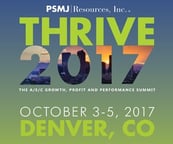 Quite a word this thing called innovation. Sounds impressive right? An insurmountable threshold of achievement for most of U.S. industry or so many assume.
Quite a word this thing called innovation. Sounds impressive right? An insurmountable threshold of achievement for most of U.S. industry or so many assume.
Let's first come to some agreement that this word innovation is, in-and-of-itself, meaningless and not so daunting when you first come to understand what the word truly means. A change in perspective if you will.
What I mean to say is that innovation is defined as simply a new idea, method, design, product or service; a new way of doing something, new ideas about how something can be done.
However, let us not so quickly forget that all of the aforementioned are first and foremost driven by competition; competition which has its start within the human-machine. A pursuit of business creators striving for ways to do what they do better, faster, stronger, cheaper, without a degradation in quality, and all with the ultimate goal of survival in a highly competitive landscape. And within a current competitive environment lacking in parity.
Thus the true perspective, the way our small and mid-size A/E/C business owners should understand this federal incentive, is that Congress' clear intent is to help reduce the high-cost of U.S. labor (innovators), spur growth while also maintaining employment, and ultimately bringing necessary parity to our U.S. innovators in their pursuit of staying relevant.
Why is it then that so many of our U.S. innovators, within the disciplines of architecture, engineering, and construction, still believe they are restricted from this incredibly valuable and necessary tax incentive? In short it's because 1) they are unaware, 2) trusted advisors 'advise' they will not qualify due to a lack of qualifying activity, 3) they interpret the descriptor Federal Research & Development Tax Credits much too literally (labs coats and petri dishes), and 4) they believe that taking a claim for the Research Tax Credit will increase their chances of an audit.
I would like to challenge all such naysayers to dig into IRC Section 41, and find one piece of evidence, one word or even sentence in black and white, which precludes any one industry from this valuable tax strategy based on industry NAICS code. You will not find such evidence. The R&D Tax Credit regulations are intentionally established with broad brushstrokes and based specifically on unique facts and circumstances. Period.
Recently, I was introduced to a blog FlowXRG, which was spot-on with my interpretations as to why I believe so many of our U.S. engineers, architects, and design constructors, as well as their trusted advisors, shy away and poo-poo claims heard by others of their ability to take advantage of the Research Credit. Below, I have quoted from a recent post on FlowXRG that makes my point quite clear.
The traditional cognitive divisions of professions “engineer,” “architect,” “CG artist,” “educator,” “surveyor,” “carpenter,” “machinist” – are constraining. They put a box around what people think they can do, should do, are allowed to do, or are capable of doing.
... architects, business people, realty agents, CG artists... need to better understand the science and technology that underlies the world we all live in.
The word “engineer” is too constricting. It throws up too many cognitive restrictions and limited mental models. It’s too 20th century. You know what? This is the 21st century...
This is beyond engineering, beyond architecture, beyond any one profession that we grew up thinking we have to mold ourselves into. It’s a multi-interdisciplinary self-led adventure through the potential of human creativity and industry.
Let's be perfectly clear, we are not attempting to evangelize this credit incentive to be a rubber-stamped entitlement to the A/E/C industry, let alone any industry for that matter. But what we are saying is: Yes, this incentive is a matter of 'legislative Grace'; yes, it is available to all of U.S. industry (with the right facts and circumstances per the 4-Part Test); and yes, this absolutely means our U.S. architects, engineers, and constructors.
Over the past 13 years, purely focused on the Federal R&D Tax Credit, I have heard ad nauseam: “This does not apply to us; we do not innovate; our CPA says we would not qualify; we don't make anything; we are not large enough; this will trigger an audit; we are too busy to bother; not interested.”
And though I understand all of these “objections” and put-offs being common reactions when things are new, or the belief that such questions have been firmly answered by a trusted advisor, it still disappoints when I know firsthand the disadvantage this places on such firms when compared against those firms whom they compete with daily, who have moved past the old presuppositions, through new education, awareness, further due diligence, and now actively and strategically take advantage of this incredible and necessary incentive. The data shows those who are not leveraging the Federal R&D Tax Credit are at a very distinct disadvantage. More specifically, their costs to compete (wage base) for the same services are that much more expensive. That’s why new exploration in this incentive would be well worth the time.
If you are a U.S. company, make products and services on U.S. soil, then there has to, has to, be a credit available to you. Yes this means our innovators in architecture, engineering and construction. Now the question is - What could it mean to us to explore this federal program again?
About the Author: Dawson L. Fercho is the partner-founder of Corporate Tax Advisors, Inc. (CTA). He brings over 20 years of consulting experience, 13 years exclusively focused on the Federal Research Tax Credit, working with the accounting industry and small to mid-size manufacturing, technology, engineering, architecture and construction clients. In his current role for Corporate Tax Advisors, Dawson is responsible for all areas of client service and overseeing CTA's marketing and business development. Dawson is currently studying for the IRS Special Enrolled Agent Exam giving authority to practice before the Internal Revenue Service in all our nation's tax arenas including the Research Tax Credit. He can reached at dawsonf@corporatetaxadvisors.com

Corporate Tax Advisors, Inc. is a Platinum sponsor of PSMJ's THRIVE 2017 taking place October 3-5 in Denver. Are you ready for two high-energy days of inspiration, networking, and fun? THRIVE 2017 is your chance to learn, to network, and to get an eye-opening perspective on what the world’s most successful A/E/C firms are doing right now to thrive. This unique annual event attracts senior-level executives from a wide range of A/E/C organizations located around the world. Registration is now open!



